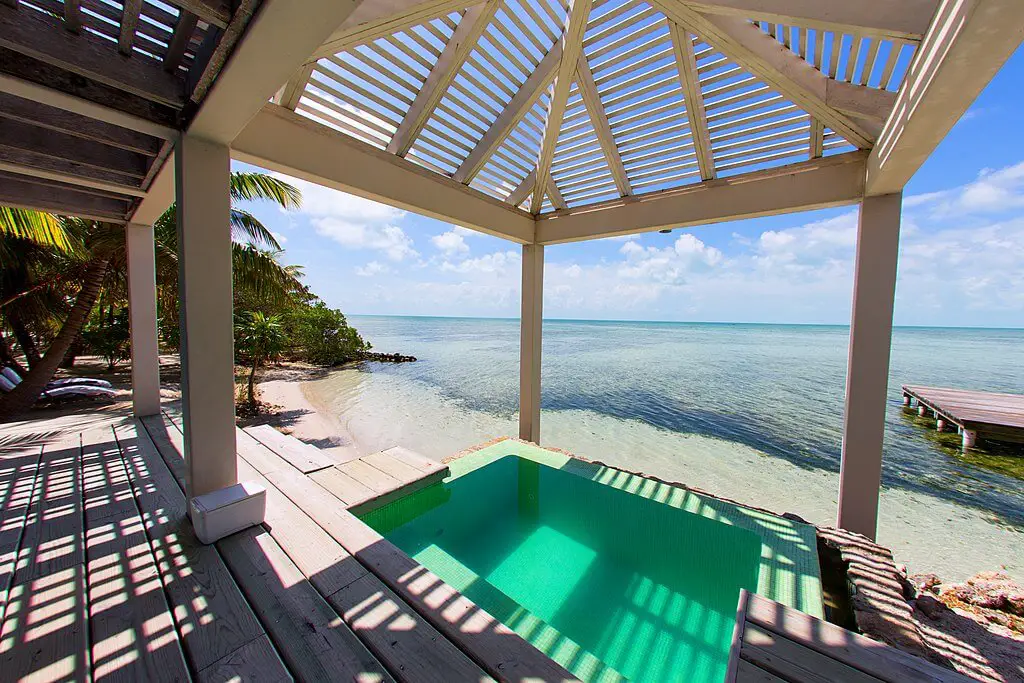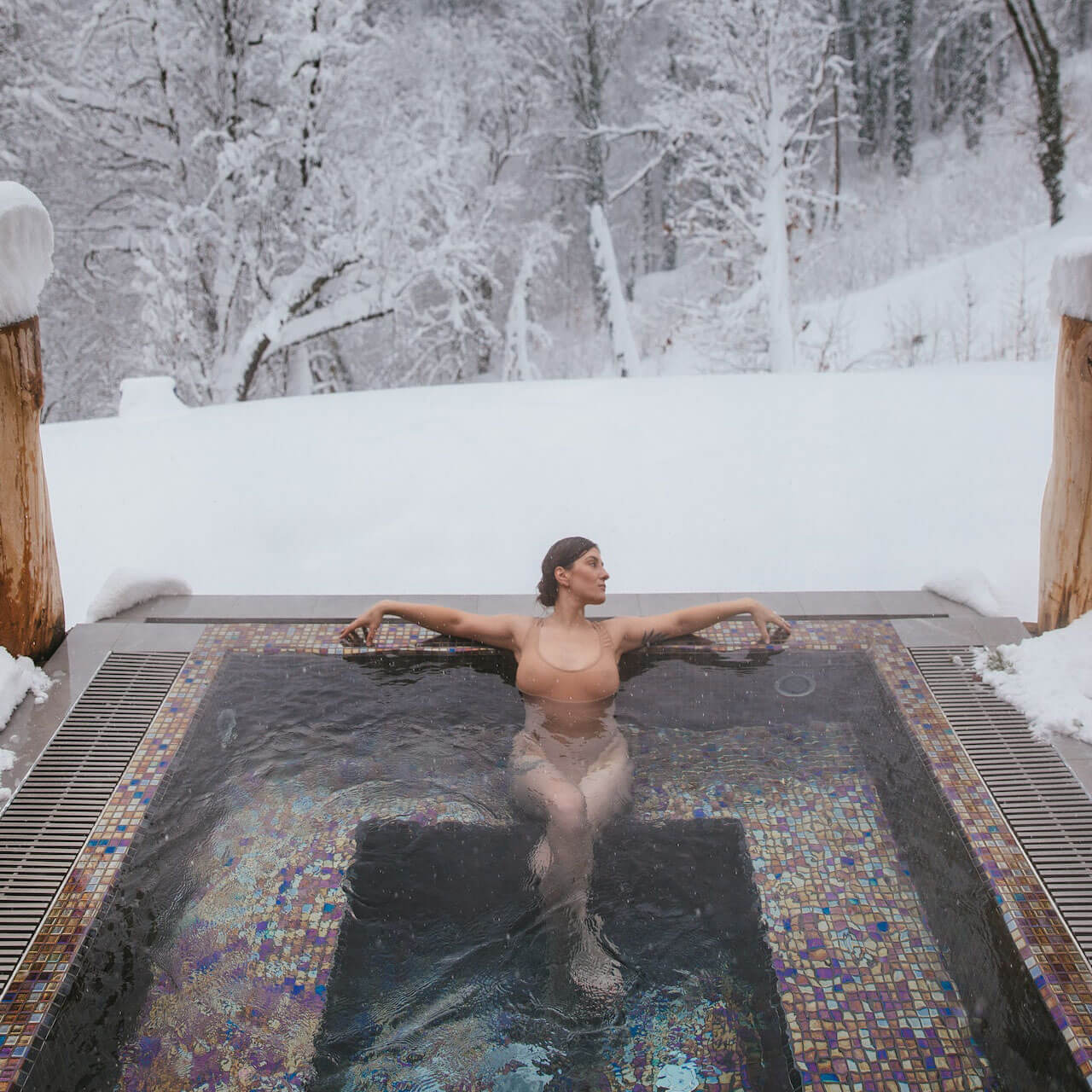Hot and cold plunge pools have gained popularity for their potential health benefits and therapeutic effects on the body. These pools, which involve immersing oneself in alternating warm and cold water, offer a unique experience for relaxation, invigoration, and overall well-being.
Some of the potential benefits include improved circulation, reduced inflammation, muscle recovery, and stress relief. Providing an invigorating contrast, the hot and cold water immersion can stimulate blood flow, release endorphins, and help control joint inflammation. Furthermore, research indicates that consistent contrast therapy routines may even aid in managing mental health, such as anxiety and depression.
This article delves into the numerous benefits of hot and cold plunge pools, exploring the science behind these therapeutic techniques and sharing practical tips to ensure a safe and beneficial experience in both types of pools.
Benefits of Heat Therapy

Hot plunge pools, hot tubs, steam rooms, or saunas offer numerous benefits that can improve an individual’s overall well-being.
Relaxation and Stress Relief
One of the main benefits of a hot plunge pool is relaxation and stress relief. Immersing oneself in hot water helps the body release endorphins, the body’s natural feel-good chemicals, that promote relaxation and stress reduction.
Spending time in a hot plunge pool can aid in unwinding after a long day and provide an escape from daily stressors.
Muscle Recovery
Hot plunge pools can significantly aid in muscle recovery. The warm water promotes a temporary reduction in joint stiffness, pain, and muscle spasms.
The higher temperatures, typically ranging from 94° — 104° Fahrenheit, relax tight muscles, improve blood flow, further help alleviate muscle aches.
Improved Circulation
Another notable advantage of hot plunge pools is improved circulation. The warm water helps dilate blood vessels, allowing better blood flow throughout the body. This improved circulation supports faster healing of injuries and reduces joint inflammation.
Combining hot and cold plunge pools in contrast therapy helps regulate blood flow and optimize healing and recovery time.
Benefits of Cold Plunges

Cold plunge pools offer a myriad of health benefits that contribute to improved physical and mental wellness. In this section, we discuss some of the key advantages of cold plunging, including reduced inflammation, a boosted immune system, and enhanced mental well-being.
Reduced Inflammation
Regular exposure to cold water, as in a cold plunge, has been shown to lessen inflammation in the body. In turn, this can aid with joint pain and muscle repair.
When recovering from intense workouts or dealing with chronic pain, cold plunges can provide a natural and non-invasive way to reduce discomfort and promote healing.
Boosted Immune System
Cold plunge pools can positively affect the immune system as well. Intentional cold exposure acts as a hormetic stressor—a good kind of stress that helps the body adapt and stay fit and healthy.
The cold temperature stimulates the production of white blood cells and other immune functions, resulting in an overall improvement in the body’s ability to fight off infections and illnesses.
Enhanced Mental Well-being
Aside from physical benefits, cold plunging also offers mental health advantages. Cold water swimming has been linked to increased concentrations of norepinephrine and endorphins, which can improve energy, alertness, and mood. These effects could even help alleviate depression, according to a 2020 scientific review.
Furthermore, the sensation of breathlessness experienced when plunging into cold water can improve lung function. The practice of holding one’s breath and releasing it slowly during cold plunges activates nerves in the autonomic nervous system, which play a role in resilience and stress management.
Overall, cold plunge pools offer a range of benefits that can enhance physical health and mental well-being. Consider incorporating this practice into your wellness routine for improved recovery, immune boost, and mood enhancement.
Alternating Between Hot and Cold Plunge Pools
Cryo and Thermo Therapy Techniques
When athletes and fitness enthusiasts are looking for ways to speed up recovery and enhance overall wellness, alternating between hot and cold plunge pools can be an effective technique.
This method, known as contrast therapy, combines the benefits of cryotherapy (cold therapy) and thermotherapy (heat therapy) in one session.
Using a cold plunge pool, water temperature is usually maintained between 50-59°F, offering a recovery-focused environment for muscles and joints. In contrast, hot plunge pools have temperatures ranging from 94-106°F, raising body temperature and increasing circulation.
Optimizing Recovery and Wellness
Alternating between hot and cold pools promotes several physiological benefits. For instance, cryotherapy can help reduce inflammation and swelling, while thermotherapy stimulates the release of endorphins and improves relaxation.
Contrast therapy offers additional benefits for mental health as well. According to this study, consistently practicing contrast therapy can help manage stress and anxiety levels by releasing endorphins that deliver calm energy and a sense of well-being.
When implementing these techniques, it is essential to follow a few guidelines. Here are some steps for a successful contrast therapy session:
- Begin with a warm-up exercise to increase body temperature.
- Start with a hot plunge, immersing the body for 3-5 minutes to increase circulation.
- Transition to a cold plunge for 1-2 minutes to reduce inflammation and refresh the body.
- Repeat the process for a total of 3-4 cycles.
- Finish the session with a cool-down exercise or gentle stretching.
Remember, it is crucial to seek advice from a healthcare professional before starting any hot or cold water therapy regimen. They can help guide the process and ensure it is appropriate for individual needs and goals.
How to Use Hot and Cold Plunge Pools
Hot and cold plunge pools offer numerous benefits, especially for athletes and people with muscle and joint discomfort. To maximize these benefits, it’s essential to use them correctly and maintain a consistent regimen. Here are some guidelines for making the most of hot and cold plunge pools as part of your wellness routine:
First, start with the hot plunge pool. The temperature of a hot plunge pool typically ranges from 94 to 106 degrees Fahrenheit, which raises body temperature, increases circulation, and stimulates the release of endorphins.
To enjoy the benefits of the hot plunge pool, gently submerge yourself in the water and relax for about 10 to 15 minutes. As an alternative, you can spend that time in a sauna, steam room, or hot tub. This will help ease muscle tension and stimulate blood flow.
Next, transition to the cold plunge pool. Cold plunge pools are maintained at a constant temperature between 50 and 55 degrees Fahrenheit to help rapidly cool the body, stimulate blood circulation, and close pores.
Immerse yourself in the cold plunge pool for 1 to 3 minutes. This will cause your blood vessels to constrict, reducing inflammation and relieving muscle spasms.
For best results, alternating between hot and cold pools is recommended. Doing so multiplies the effect of water therapy, providing enhanced relief from muscle pain, inflammation, and stiffness. Aim to complete two to three cycles of hot-cold immersion for optimal performance and recovery.
Remember that consistency is vital when incorporating hot and cold plunge pools into your wellness routine. Schedule regular sessions to ensure you fully reap the benefits of hydrotherapy. Lastly, always listen to your body and consult a professional if you have any health concerns or questions about using hot and cold plunge pools safely.
Safety Tips and Recommendations
Time and Temperature Guidelines
When using hot and cold plunge pools, it’s important to follow the recommended time and temperature guidelines for each type, as this will maximize the benefits and help avoid potential risks. In general, a cold plunge pool should have a temperature range of 50°F (10°C), while a hot plunge pool should be between 100°F (38°C) and 104°F (40°C).
For cold plunge pools, limit your time in the water to 10-15 minutes per session. For hot plunge pools, stay in the water for no more than 20-30 minutes. When alternating between hot and cold pools, allow your body to adjust to the temperature differences before repeating the cycle.
Who Should Avoid Plunge Pools
While hot and cold plunge pools can offer numerous benefits, they may not be suitable for everyone. Individuals with certain health conditions should avoid using plunge pools or consult a healthcare professional before doing so. Some of these conditions include:
- Cardiovascular issues, as cold water can cause blood vessels to constrict and potentially put extra strain on the heart.
- Pregnant women, as the heat from hot plunge pools may cause complications.
- Severe respiratory conditions, as rapid temperature changes may aggravate symptoms.
- Skin conditions or open wounds, as hot water may irritate the skin or increase the risk of infection.
Hot and cold plunge pools can provide numerous health benefits when used properly. By following the guidelines and considering your individual health needs, you can ensure a safe and effective plunge pool experience.

